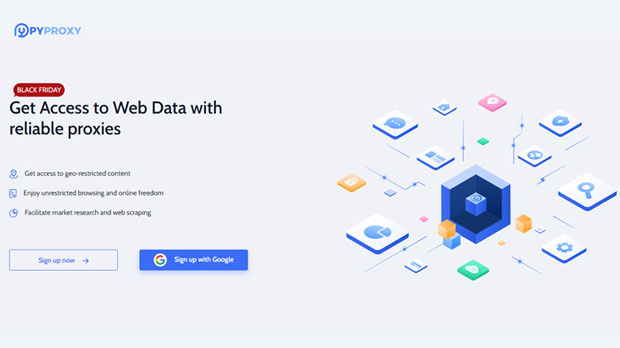In high-concurrency scenarios, such as ticket buying during sales events, the demand for internet speed, reliability, and anonymity increases significantly. IPv6 residential proxies offer a unique solution to these challenges. Unlike traditional proxy servers, IPv6 residential proxies are less likely to be detected by websites as bots due to their use of real residential IPs, providing users with more security and access reliability. This article delves into the performance of IPv6 residential proxies in these high-demand situations, analyzing their advantages, limitations, and overall effectiveness in ticket purchasing events and similar high-concurrency use cases. 1. Introduction to IPv6 Residential ProxiesIPv6 residential proxies are a type of proxy that routes traffic through real residential IP addresses assigned to devices on the IPv6 network. These proxies are different from standard data center proxies or shared proxies as they are linked to actual users' internet connections, making them appear legitimate to websites. This makes IPv6 residential proxies especially useful in scenarios like high-demand ticket purchases, where websites implement anti-bot measures to protect their services from automated bots.IPv6, the newer version of the Internet Protocol, offers an extended address space, making it highly useful for proxy networks. Unlike IPv4, which is running out of address availability, IPv6 provides virtually unlimited IP addresses, allowing proxy services to scale more effectively. This enhanced scalability gives IPv6 proxies an edge in high-concurrency environments where many users need unique IP addresses to avoid detection.2. Key Advantages of IPv6 Residential Proxies in High-Concurrency Requests2.1 High Availability and ScalabilityOne of the main advantages of IPv6 residential proxies is the sheer number of available IP addresses. As opposed to IPv4, which is limited in terms of unique IP addresses, IPv6 provides nearly an infinite number of addresses. This makes it highly effective for handling high-concurrency tasks, such as ticket buying during online sales events. A large number of users can access the platform simultaneously, each using a unique IPv6 address, which minimizes the risk of IP bans.In addition, the ability to scale easily means that services using IPv6 residential proxies can handle fluctuating traffic demands without sacrificing performance. This scalability is essential when there are thousands, if not millions, of people trying to secure tickets at the same time.2.2 Higher Anonymity and Reduced Detection RiskSince IPv6 residential proxies use real residential IPs, they are less likely to be flagged as suspicious by websites compared to data center proxies or VPNs. Websites have become increasingly sophisticated in detecting and blocking proxy ips, especially during high-concurrency events like ticket sales. Traditional proxies are often blacklisted, and users may face CAPTCHAs or even IP bans when trying to access the site.IPv6 residential proxies, however, offer much higher anonymity since they appear as if they are coming from real users. This reduces the chances of being detected by anti-bot systems, which rely on identifying patterns typical of automated traffic. By blending seamlessly with regular residential traffic, IPv6 residential proxies provide a more stable and less detectable way to access high-demand websites.2.3 Faster Response Time and Low LatencyLatency is another critical factor when participating in high-concurrency requests, especially in time-sensitive activities like ticket purchases. IPv6 is optimized for better efficiency, with faster packet delivery and routing compared to IPv4. This leads to lower latency and faster response times, which are crucial when competing for limited tickets during high-demand events.IPv6 residential proxies leverage the broader routing potential of IPv6, improving the overall speed and responsiveness of requests. When multiple users are trying to buy tickets simultaneously, the ability to send requests swiftly and without delay can mean the difference between securing a ticket and missing out.3. Challenges of Using IPv6 Residential ProxiesDespite their numerous advantages, IPv6 residential proxies come with their own set of challenges, especially in high-concurrency scenarios.3.1 Limited Proxy PoolsAlthough IPv6 offers a large address space, the actual number of residential IPs available through proxy services can still be limited. Proxy providers may not have as large a pool of IPv6 residential IPs as expected, potentially leading to exhaustion of available IP addresses during peak times. This could result in slower speeds or even inability to connect to certain websites.Furthermore, some websites may still not fully support IPv6, which could make it difficult for users to utilize these proxies in some regions or platforms. Although IPv6 adoption is growing, there are still some legacy systems relying on IPv4 that might cause compatibility issues.3.2 Higher Cost and Availability ConcernsThe cost of using IPv6 residential proxies is generally higher than traditional proxies due to their superior anonymity, scalability, and lower detection risk. Since residential proxies are tied to real users' connections, providers often charge a premium for their use. For high-demand events, this added cost can become significant, especially when large numbers of proxies are needed to increase the chances of success.3.3 Potential Ethical and Legal IssuesThe use of IPv6 residential proxies can sometimes cross ethical and legal boundaries. Some ticketing platforms actively discourage the use of proxies for automated ticket purchasing, as it undermines the fairness of the process. In extreme cases, using proxies in such scenarios may violate the terms of service of certain websites or platforms, potentially leading to account suspension, legal consequences, or loss of access.While proxies are a powerful tool for enhancing anonymity and bypassing geographic restrictions, users must consider the ethical implications and ensure that their actions comply with the applicable rules and regulations.4. Best Practices for Using IPv6 Residential Proxies in High-Concurrency ScenariosTo maximize the performance and minimize the risks associated with IPv6 residential proxies, users should follow best practices when using them for high-concurrency tasks like ticket purchasing.4.1 Use Multiple ProxiesIt is advisable to use multiple proxies simultaneously to reduce the risk of hitting IP rate limits. By distributing requests across multiple proxies, users can avoid detection and increase the likelihood of success. This also helps in handling larger volumes of traffic, as multiple proxies can balance the load.4.2 Test Proxies Before Major EventsBefore relying on IPv6 residential proxies for a major event, users should test their proxies to ensure they are working correctly. Testing can help identify any issues with speed, compatibility, or IP blocking ahead of time, giving users a chance to resolve them before the event begins.4.3 Monitor Proxy PerformanceMonitoring proxy performance is essential to ensure that requests are being sent without delays or errors. Using proxy management software or tools to track proxy health and performance in real-time can help avoid disruptions during high-concurrency events.IPv6 residential proxies provide a robust solution for users attempting to navigate high-concurrency environments like ticket purchasing events. Their advantages—high scalability, reduced detection risk, and lower latency—make them ideal for situations requiring fast, anonymous access. However, users should be mindful of the potential challenges, such as the cost, limited availability, and ethical considerations. By following best practices and being prepared, users can maximize the effectiveness of IPv6 residential proxies and enhance their chances of success in these highly competitive scenarios.
Sep 11, 2025



































































